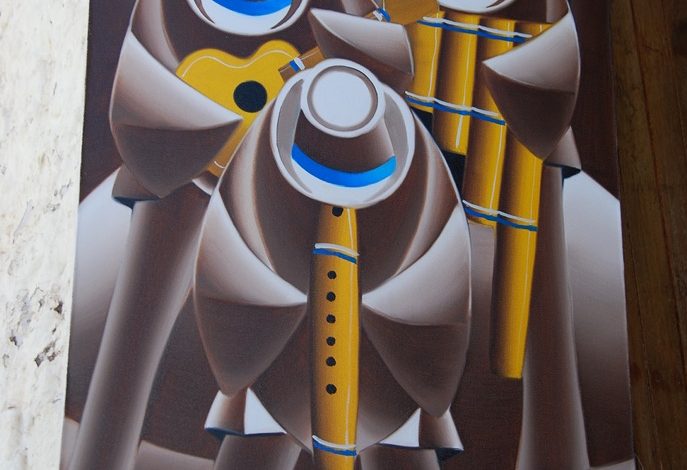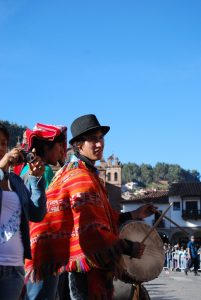Andean Music Soars in Cuzco

A sweet melody sounds when the wind blows through the Andes of Peru. Andean music has become famous world-wide because of the many musicians who have taken parts of it to global audiences. But this tradition is so much more than what has passed into the world.
Any day of the week you will find musicians, dressed in versions of traditional clothing, playing in the restaurants that receive tourists. They tend to play the styles that are most known outside Peru and that themselves have a history of origin in movements to grapple with the richness of the Andean musical tradition.
But like the winds that blow across the mountains of twin Andean chains and the innumerable valleys that are found in their folds, the music flows fresh and diverse, and always nourished by local and regional traditions as well as the world around.
In the region of Cuzco we find music coming from Canchis, from the towns and communities of Pitumarca and Checacupe, that is distinctive and widely appreciated. Since music is generally associated with dance, they mark steps with tarolas (traditional drums like snare drums) made from goat skin and huancaras (deeper, more bass drums) made from cow skin. These awake the trumpets of cow horn or conch shell (pututus) to animate the people of the four suyus (regions) of America.

Andean music has a variety of musical genres that are native to South America. They have been traditionally interpreted by Aymara and Quechua speaking peoples since very ancient times. The melodies are often quite nostalgic, especially when played on the notch flute (quena) of cane that soars and floats as if a condor or a leaf on an updraft. It hangs and slowly descends to the next note until an entire melody sounds like breezes that come and go in the mountain valleys.

To the quena is often added a charango whose sound is a sharp and dense as a handmade weaving from Pitumarca which can repel even the rain. The charango is a ten string, small, guitar like instrument which plays chords and rhythmic accompaniment as well as melody and forms a natural pair with the quena.
Drums, flutes, and some trumpets are native to the Andes, while stringed instruments come from Europe. A wide variety of these instruments has been developed. They include notch flutes of a range of sizes, like the quena and quenacho, fipple flutes (recorder like flutes) from tiny to quite large, pitillos to pinkillos and museños, and a whole range of pan pipes. Trumpets are either of cow horn or conch shell and are called pututus.

Music native to the Andes also includes a range percussion instruments as we mentiones above. To the tarola and huancara we need to add the tinya (a hand drum) and sheep’s hooves (patas). Today many groups that work the tourist restaurants include a rain stick which is not native to highland music.
Finally, Andeans have adopted a range of string isntruments brought from Europe but now thoroughly nativized. These include the guitar and the charango, both of wood and of armadillo shell. It also includes in Cuzco the bandurria, a mandolin like instrument much loved in Cuzco’s own indigenous music, harp and violins.
The music played can be an indigenous form or it might also involve music from renaissance Spain and elsewhere. Some genres are the huayño, the huaylas, the carnavalito, the qhashwa and more. These themes have long traditions in the music of the range of communities of Peru. But they also come to the city where musicians from lots of regions play and adapt. As a result these forms are in constant change.

The musicians play Andean music with great feeling and pleasure, especially when it is performed in feasts such as in Intirraymi. All the themes are done to the beat of the bombos and tarolas (drums)with the enchanting melodies on the quenachos. The pututos open the way for the songs to appear.
Cuzco, as a city, is a meeting ground for all kinds of music. There is Andean music played in the restaurants which tends to be of the international variety, also called música latinoamericana (Latin American music), as well as a range of more local forms presented in the university theatre (the Paraninfo Universitario) off the Plaza de Armas, the Municipal Theatre, and on special feast days throguhout the city.
Cuzco has a rich musical scene, from music particular to the city and its traditions, to the music that comes from elsewhere in the Andes and joins in performances in many different locales. Music makes the pulse of the city.






